5 Preschool STEM Activities to Spark Young Scientists

This post may contain affiliate links; please see our terms of use for details.
- Your kids are never too young to engage in STEM activities.
- There are so many fun ways to explore STEM education that are inexpensive and don’t require a lot of materials.
- STEM engagement for young kids does not have to be formal or structured.
- STEM activities for preschoolers involve fun challenges that inspire your child’s curiosity, creativity, and love of learning, equipping them with skills they’ll use later in school.
It’s never too early to encourage kids to engage with STEM, which stands for science, technology, engineering, and math learning. The good news for parents is that this type of learning doesn’t have to be formal or expensive, and isn’t hard because preschoolers are naturally curious scientists already.
Kids are inherently inquisitive and they learn through the constant exploration of their environment. Adding fun STEM activities to their day enhances the problem-solving and analysis skills that they already engage with organically.
Fun with STEM activities in the preschool years is also a predictor of future academic excellence, and experts agree it’s just as important as encouraging literacy in your little ones. So take a look at these easy and engaging preschool STEM activities to spark the young scientists in your life.
STEM Activity 1: Will it Sink or Float?
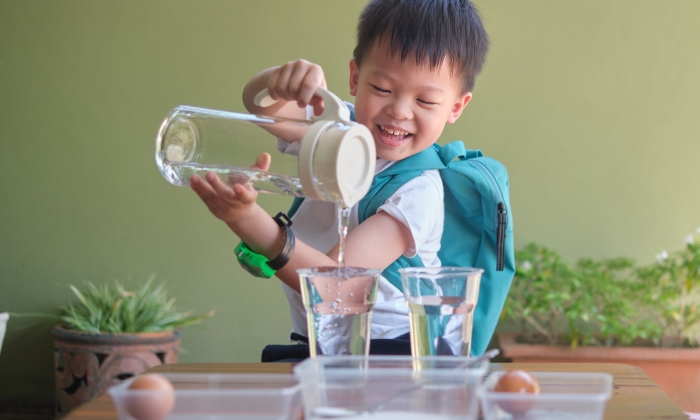
This is a simple experiment to teach kids about density, buoyancy, and the properties of water. It can be done in multiple ways in different environments and with different receptacles. You can help your kids with fun variations to see how these might change your results.
You Will Need:
- Small objects that float, like crayons, foam toys, Lego blocks, corks, or small balls.
- Small objects that sink, like coins, rocks, metal cars, or magnets.
- A receptacle for water, such as a sink, bucket, or bathtub.
Skills Gained:
This activity promotes observation, analysis, and experimentation, and helps kids practice how to follow a process.
How to Play:
Depending on the age and interest of your kids, you can try this activity in a variety of ways. This is a good activity for teaching basic recording skills and for involving multiple kids or the whole family.
| Basic game |
|
| Variation: Add elements to the water |
|
| Variation: Prediction and results chart |
|
STEM Activity 2: Building Simple Structures
- What’s Included: 32 translucent geometric shapes in 6 different colors. This set includes Squares (2 Large, 14 Small) and Triangles (8 Equilateral, 4 Right, 4 Isosceles)
- What Makes It Unique: You’re looking at the original and most celebrated set in magnetic construction! Features classic geometric shapes in primary colors.
- Developmental: Certified STEAM toy, per Dr. Gummer’s Good Play Guide, in partnership with The Toy Association, for aiding in the development of fine motor skills, bilateral coordination, cognitive skills, executive functioning, creativity and more!
- Great for Gifting: THE starter set for your 3+ year old.
Building activities are a simple and effective preschool STEM activity which younger kids will happily engage in. The best part is that you probably have all the materials you need at home already.
You Will Need:
- Building toys, like Lego, Duplo, wooden blocks, or Magna Tiles.
- Recycled household materials, like cereal boxes, cardboard tubes, egg cartons, or plastic food containers.
- Pictures of different structures or famous buildings.
Skills Gained:
Your child will work on hand-eye coordination, fine motor skills, and engineering concepts like stability and balance. Introduce numeracy into the activity by asking them to count numbers of blocks that they are using.
How to Play:
Start with the basic building activity and then you can expand on it. Building activities not only work on STEM skills, but they also encourage creativity, story-telling, and imaginative thinking.
| Basic game |
|
| Variation: Build a structure with a purpose |
|
| Variation: What happens if…? |
|
Follow up on building activities by exploring different building styles around the world and talking about the job of architects and engineers. Check out the family favorite, Iggy Peck, Architect to further inspire your child.
- Hardcover Book
- Beaty, Andrea (Author)
- English (Publication Language)
- 32 Pages – 10/01/2007 (Publication Date) – Abrams Books for Young Readers (Publisher)
STEM Activity 3: Nature Scavenger Hunt
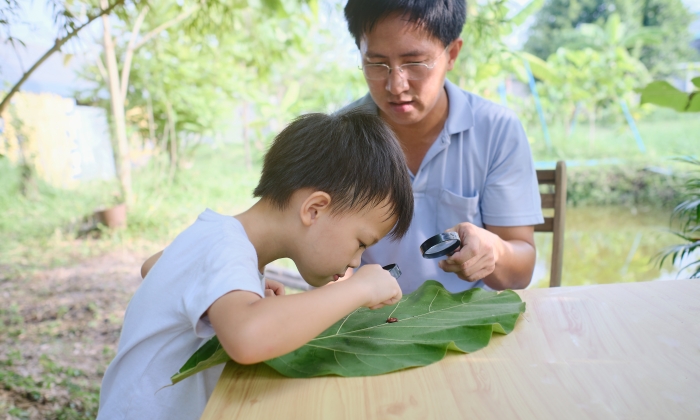
It’s a common misconception that STEM learning means working with computers and screens. Exploring nature and learning about biology is so important for preschool age children too.
Learning how plants grow, seeing where animals live, and observing the natural world through outdoor activities have so many benefits for your child’s STEM learning and more development.
You Will Need:
- List of items to find.
- Bags or baskets for collecting items.
Skills Gained:
This is a fantastic way for kids to work on observation, problem-solving, and fine motor skills. They’ll also explore biology concepts like habitat, photosynthesis, the water cycle, and biodiversity, depending on the theme of your list.
How to Play:
A fun way to explore different nature concepts is to give your scavenger hunt different themes depending on where you are. You can add numeracy practice to the hunt by asking your child to find numbers of objects too.
| Basic game |
|
| Variation: Beach theme |
|
| Variation: Forest theme |
|
| Variation: Animal theme |
|
To get deeper into biology, try some long-term activities, like planting a garden, or planting the seeds of different fruits and vegetables in pots to see what happens.
STEM Activity 4: Rainbow Flowers

This simple science activity teaches your child about capillary action in plants and can open up many different topics to explore.
You Will Need:
- White cut flowers, like roses or gerbera daisies.
- Clear jars, glasses or cups.
- Food coloring.
Skills Gained:
Your child will learn about capillary action, color mixing, and color recognition. They will also work on observation and description skills. This is also an exercise in patience and following through on projects, as it can take a little while to get your results.
How to Play:
Consider different methods of speeding up and slowing down what might happen, and help your kids to think about, observe, and record their results.
| Basic game |
|
| Variation: Mixing colors |
|
| Variation: Add different amounts of color |
|
This experiment helps your children to understand how pouring water into the ground to reach the roots of the plant gets the water all the way up the stem and to the flowers of a plant. There are so many different scientific ideas to explore here.
STEM Activity 5: Marshmallow Engineering
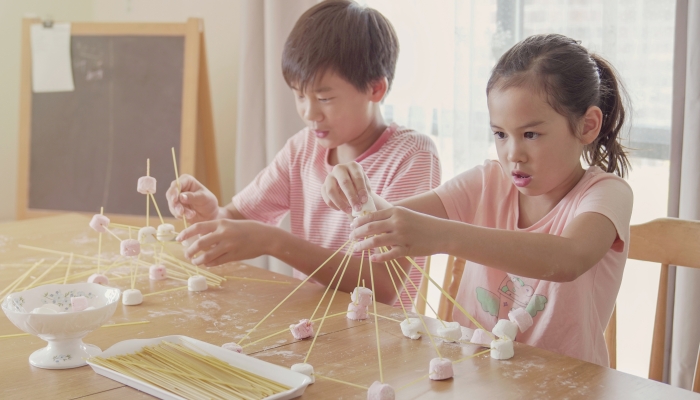
For a great STEM activity that no kid can resist, try building structures with marshmallows. This activity is easy, fun, and endlessly entertaining for preschoolers and older children alike.
You Will Need:
- A bag of marshmallows of different sizes.
- A box of toothpicks.
Skills Gained:
This is a super fun way to work on motor skills, numeracy, problem-solving and analysis. It’s also a hands on activity for learning about balance, stability, weight and engineering concepts.
How to Play:
Once you’ve tried the basic activity, expand upon it with different materials and encourage your kids to find the best materials for their creations.
| Basic game |
|
| Variation: Add different materials |
|
What Are the Goals of STEM Activities for Preschoolers?
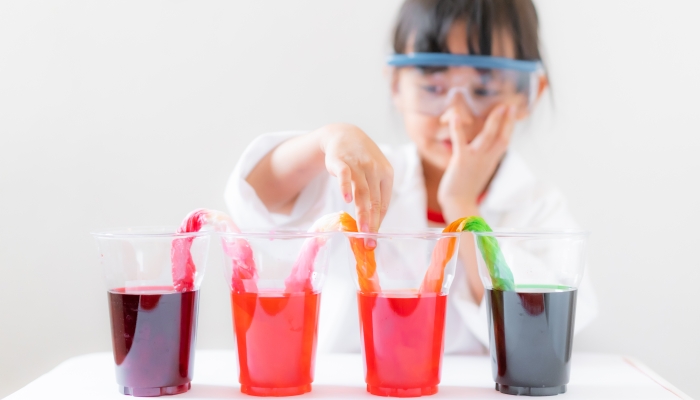
Science and technology have become increasingly important in the digital age and have transformed many aspects of our daily lives. So working on STEM skills, even for very young children, is important for helping them to understand the exciting and ever-developing world that surrounds them.
Whether it’s watching how water travels from cup to cup in the bath, or playing with food coloring in the kitchen, kids are naturally interested in the way things work. So working on preschool science and STEM is as important as working on preschool literacy skills.
When they are at this inquisitive stage of their lives, according to the Professional Association for Childcare and Early Years11. The importance of STEM learning. PACEY. 2019. https://www.pacey.org.uk/news-and-views/pacey-blog/2019/march-2019/the-importance-of-stem-learning/, engaging often with STEM activities helps build neural pathways that make science and math learning later on in school easier and faster.
Preschool science activities also help young children practice and develop a multitude of skills and abilities. For example, even easy preschool STEM activities enhance the following:
- Problem-solving skills, like trial-and-error learning and experimentation.
- Critical thinking skills, like analysis and observation.
- Fine motor skills, like pouring, pinching, squeezing, and writing.
- Gross motor skills, like swinging and jumping.
- Social skills, like taking turns and communicating.
- Language and communication skills.
- Improved numeracy.
- Organization, information processing, and planning skills.
- Learning to follow instructions.
In addition to fostering all of these skills, STEM activities also nurture your child’s love of learning and encourage their sense of discovery.
References
- The importance of STEM learning. PACEY. (2019, March 13). https://www.pacey.org.uk/news-and-views/pacey-blog/2019/march-2019/the-importance-of-stem-learning
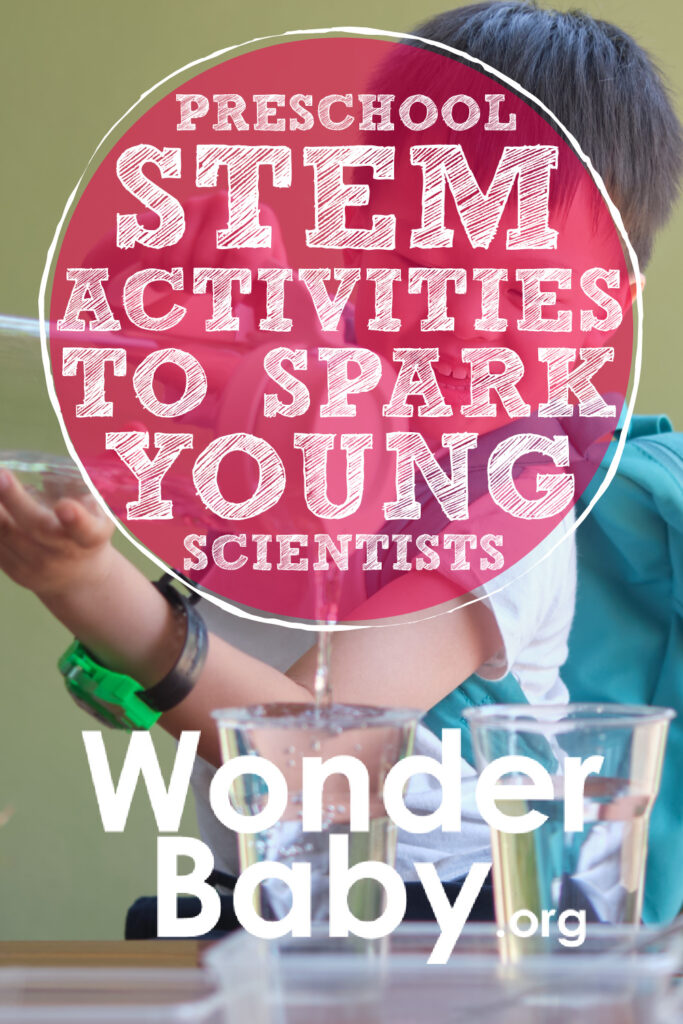
Related Posts
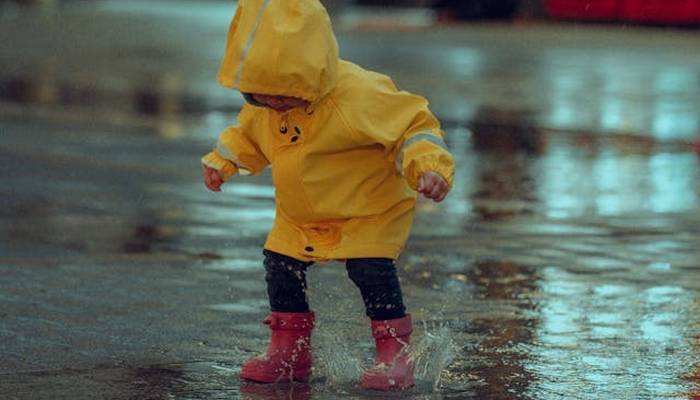
Math and Science
4 Weather Activities for Preschoolers
Whether the weather is sunny, cloudy, windy or rainy check out these educational weather activities for preschool that your children will love!
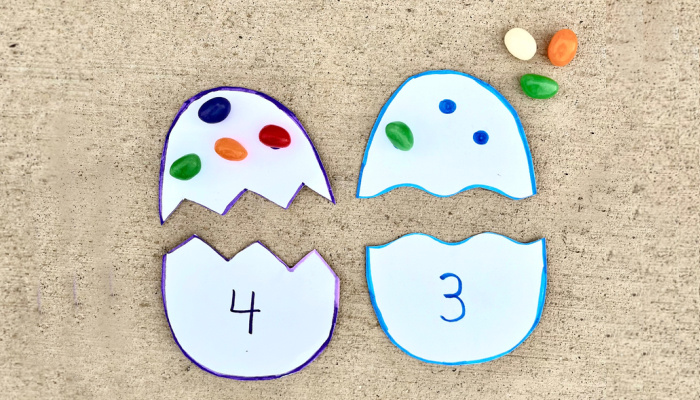
Holiday Crafts and Ideas, Math and Science
Easter Egg Number Matching Game
Counting has never been more fun than with this Easter Egg Number Matching Game. This game is easy to assemble and will surely be a hit with your little one!

Math and Science, Sensory Activities
Exploring Nature: 5 Outdoor Learning Activities for Preschoolers
Looking for things to do outside with your preschooler? These ideas for outdoor learning are easy, inexpensive, informal, and best of all, fun!

